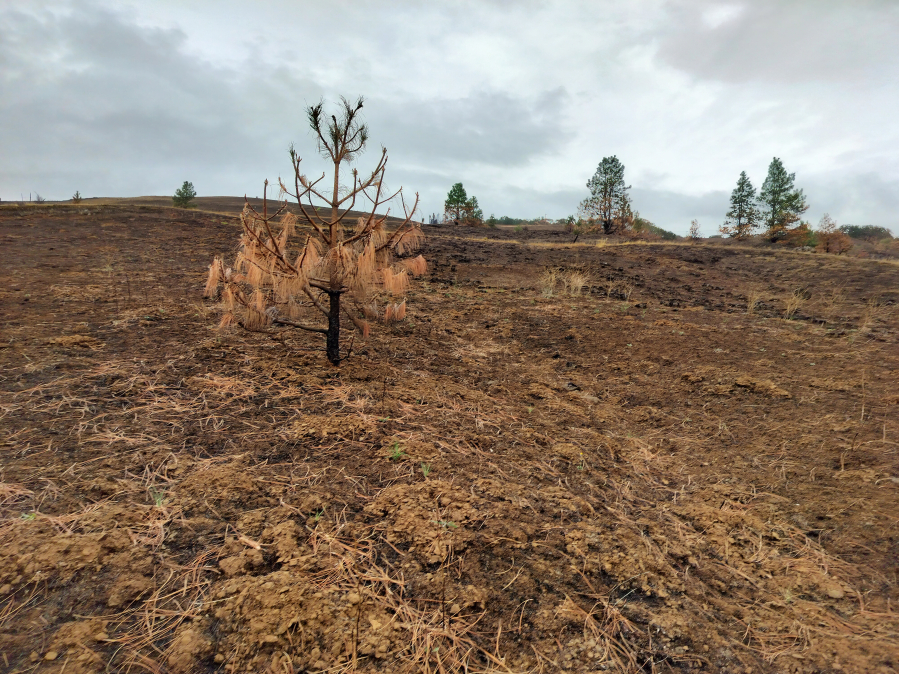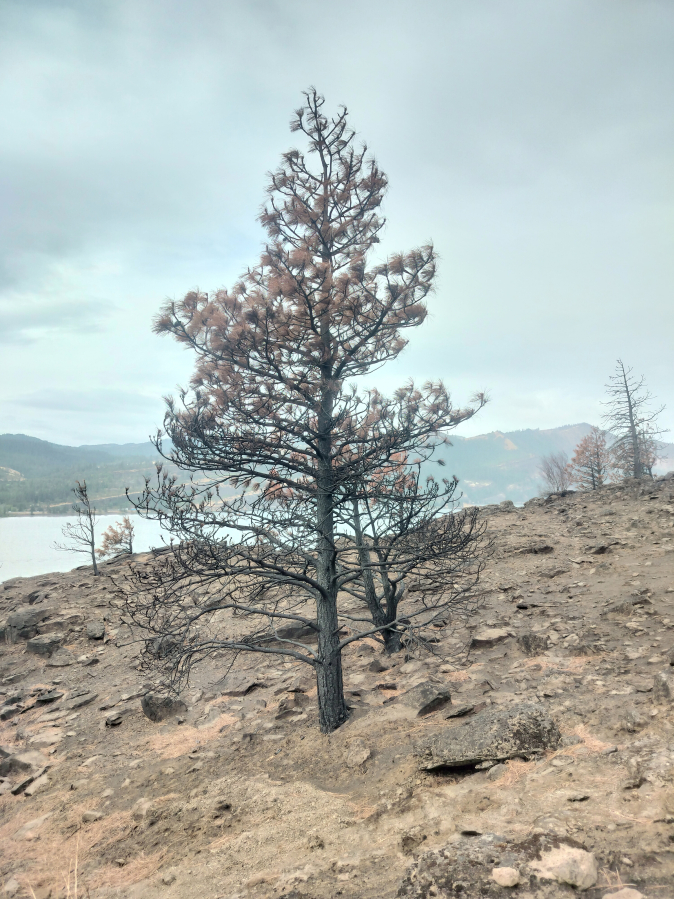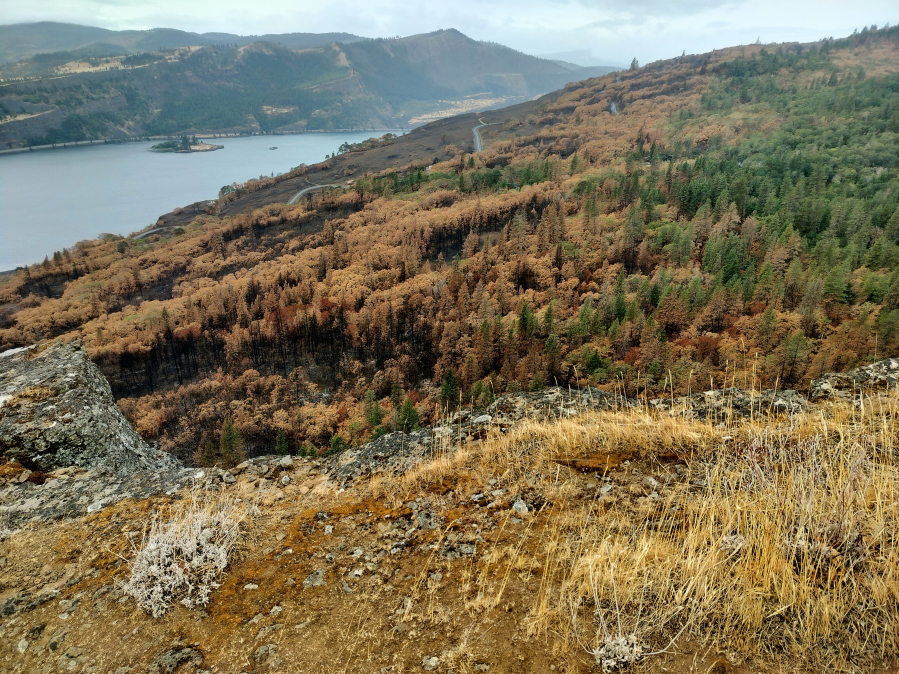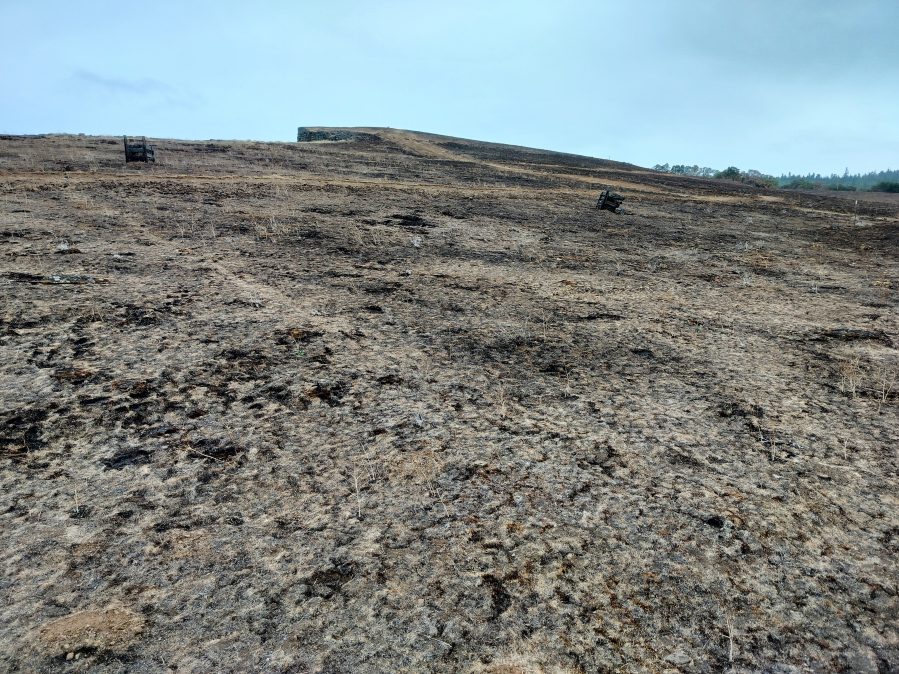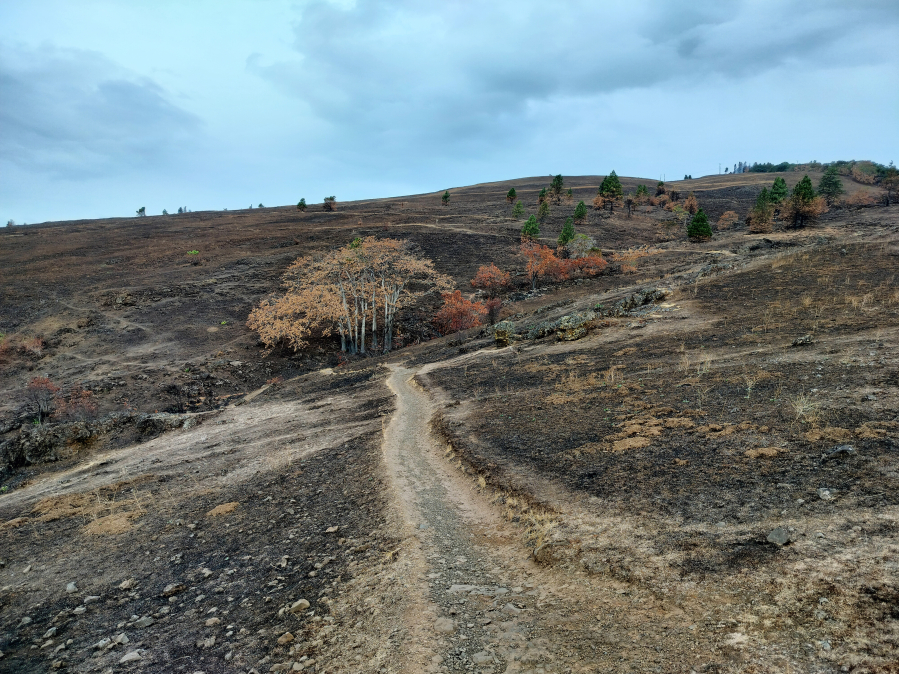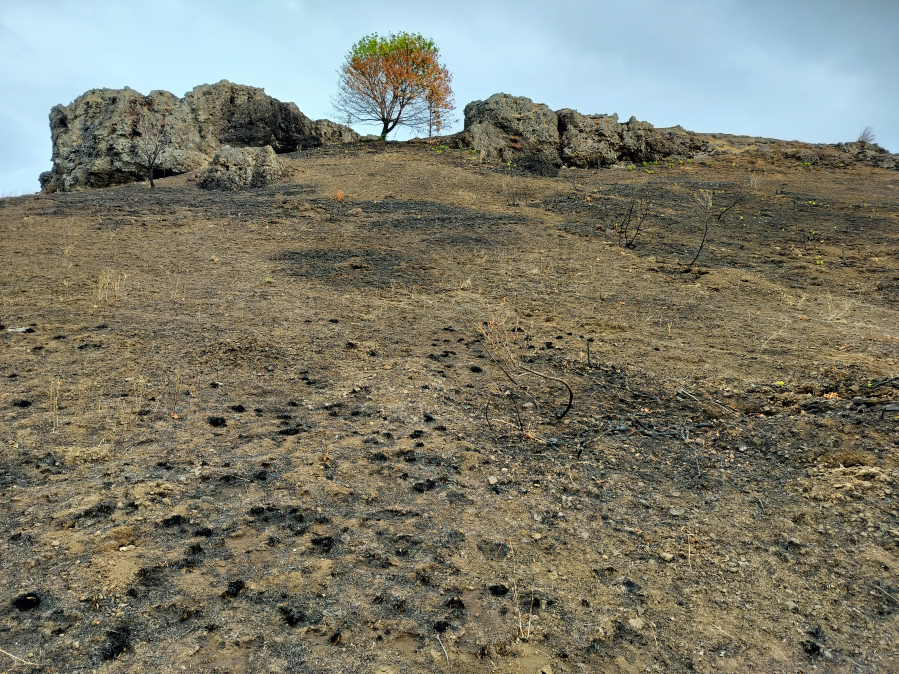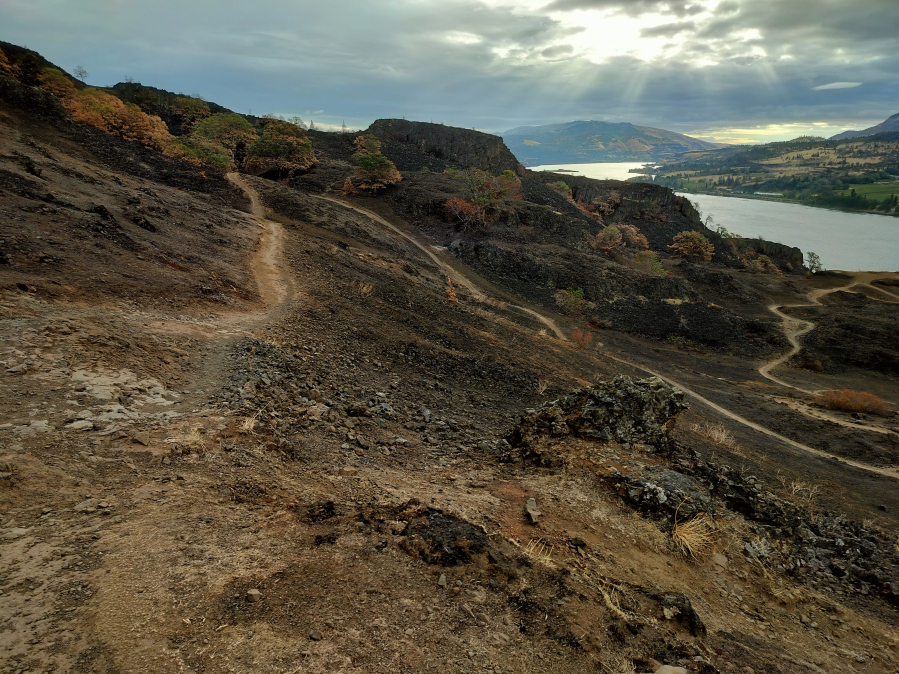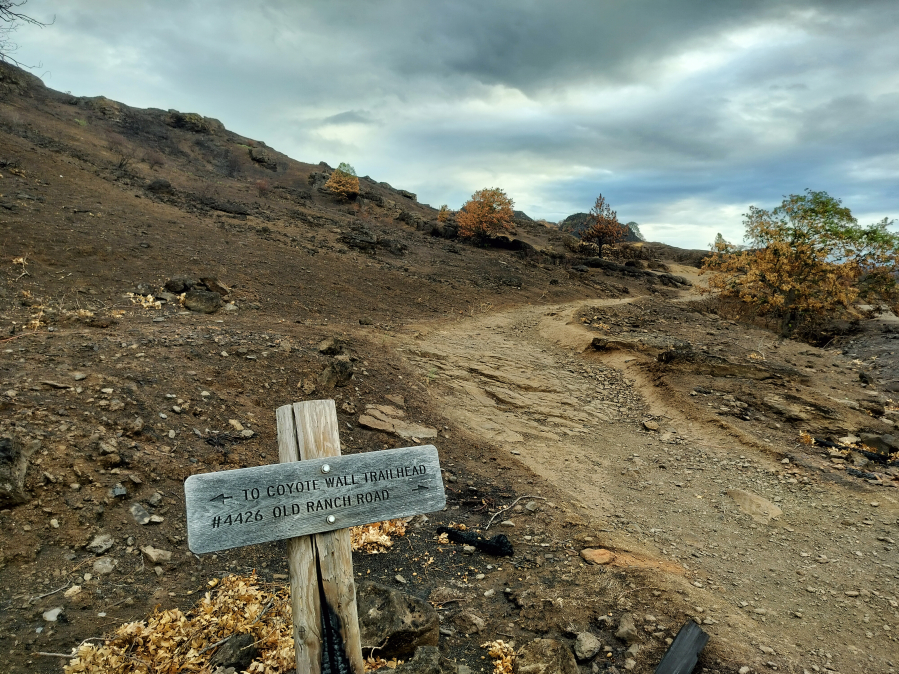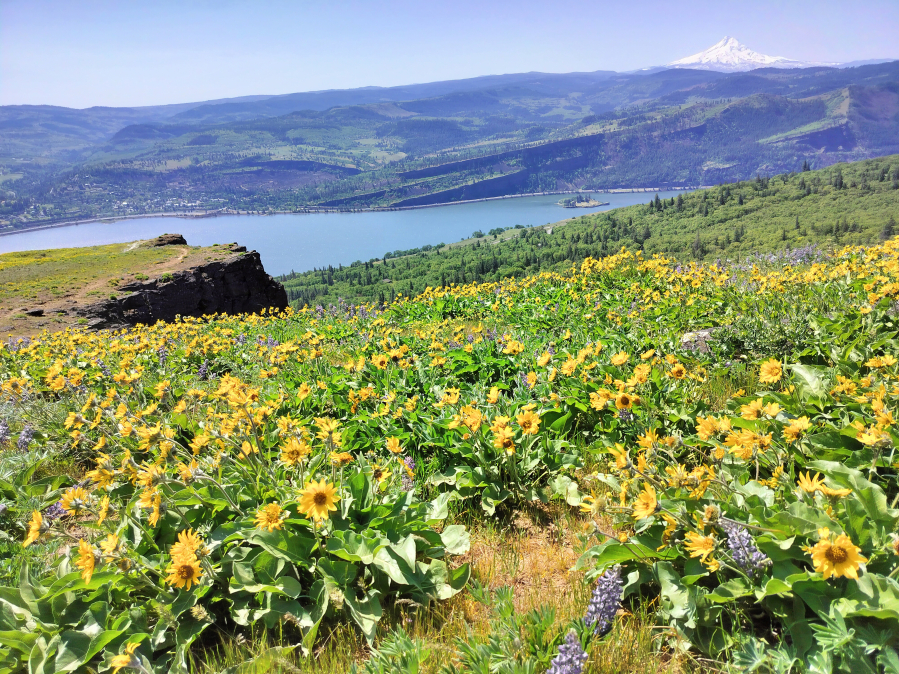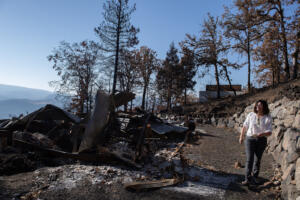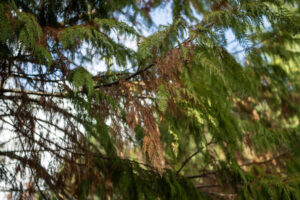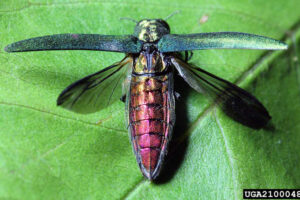BINGEN — In spring, you can count on the Columbia River Gorge’s Coyote Wall trail network to dazzle the eyes with crowded carpets of yellow and purple wildflowers. In the heat of summer, Coyote Wall’s jagged, tilting grassland dries out into a furrowed plateau of glowing gold.
But when I went back in mid-September, what I found was a darkened, denuded landscape of exposed rock and mud. I caught faint whiffs of smoke. I’ve been here dozens of times over the past few years, but I barely recognized the place.
One of the most popular hiking sites in the Columbia River Gorge National Scenic Area, the Coyote Wall plateau was consumed by flames during this summer’s Burdoin Fire, which began July 18 and eventually swept across 11,000 acres of the northeastern Gorge. It’s not clear what caused the blaze, but dozens of structures were destroyed, and the entire towns of Bingen and Lyle were evacuated before the fire was fully contained in early August.
Public lands in the northeastern zone of the Gorge, from Bingen through Lyle, were closed to visitors during the fire and expected to stay that way through November. But almost everything has reopened ahead of schedule, and the only recreation area that’s still off limits to visitors is the adjacent Catherine Creek area, Coyote Wall’s scenic neighbor to the east, and that will be reopening within a few weeks, according to U.S. Forest Service spokesperson Beth Kennedy.
Coyote Wall has been a favorite destination of mine for years — a spiderweb of steep, sunny trails, oak-and-pine oases and huge views where it’s fun to get a little lost and found again. I went back early one Sunday morning in September with trepidation. (Coyote Wall is about 80 minutes east of Vancouver on state Highway 14, beyond Bingen. There’s no fee to visit. There’s one pit toilet.)


